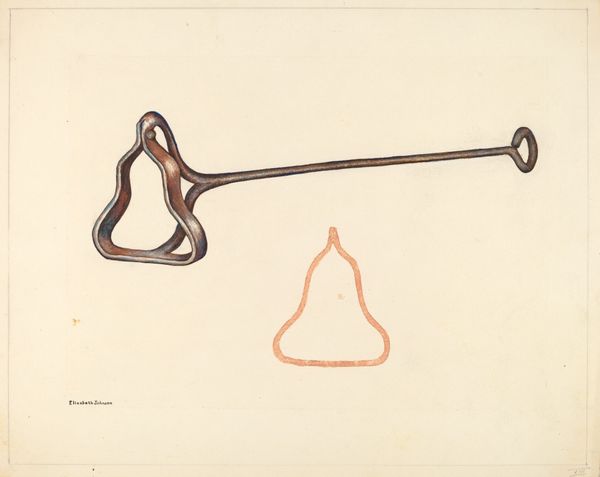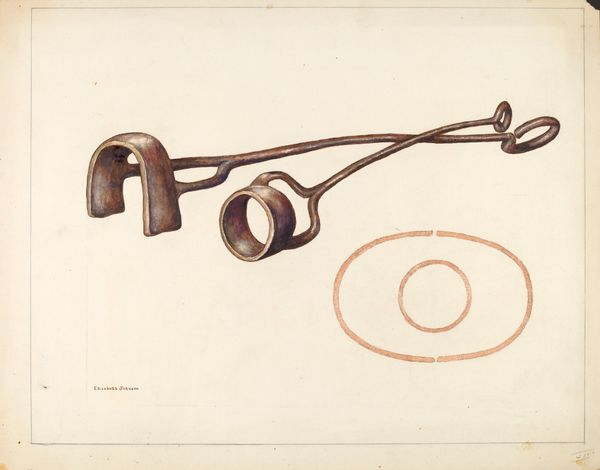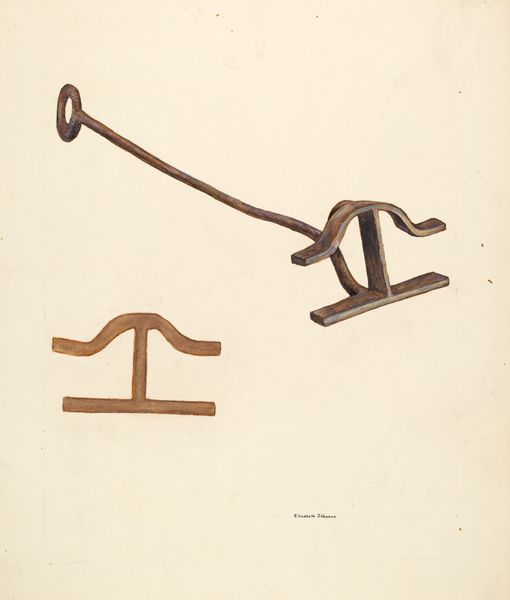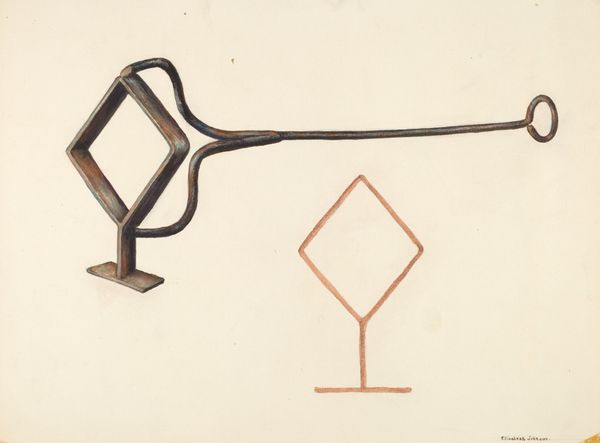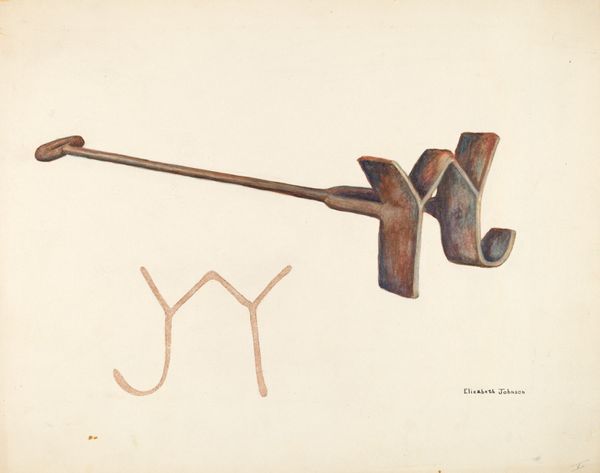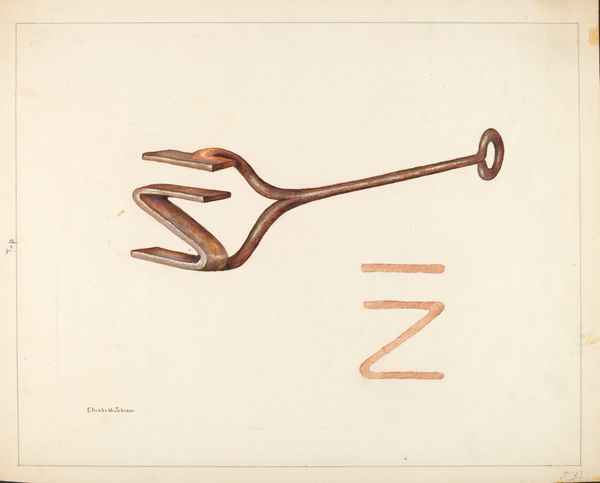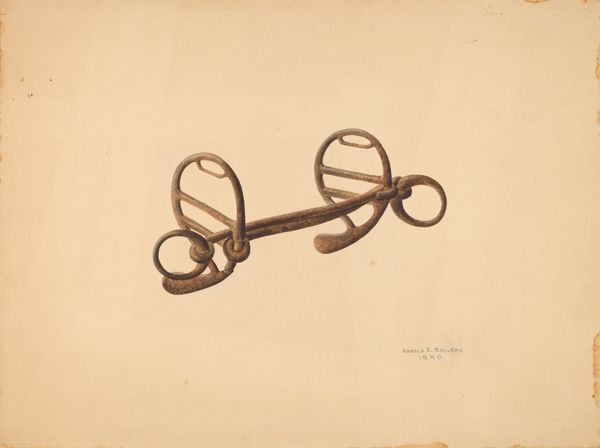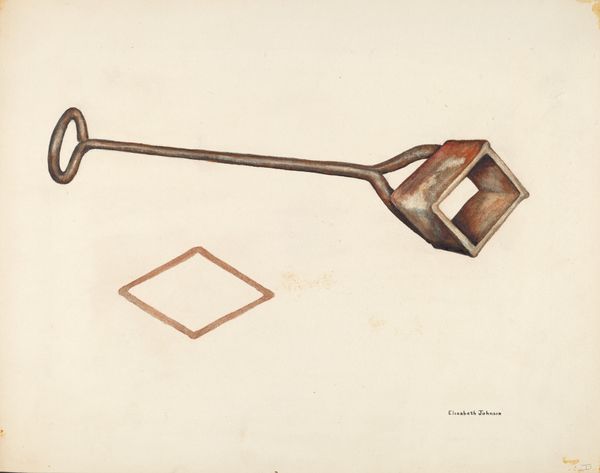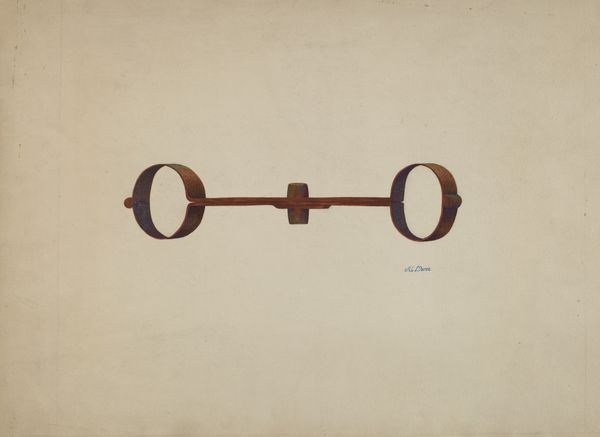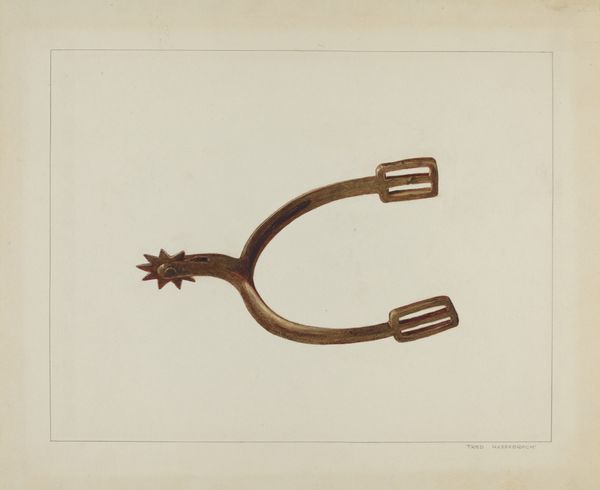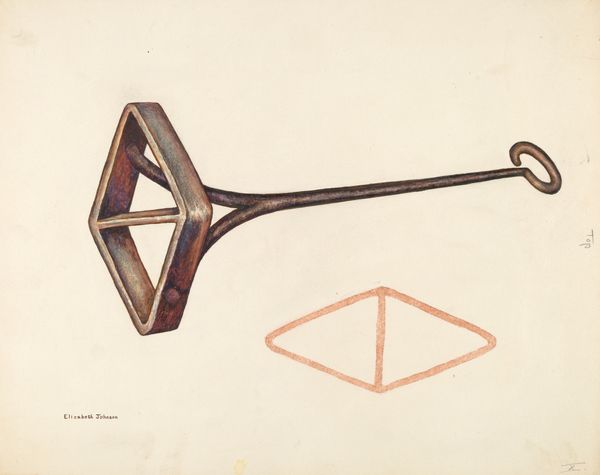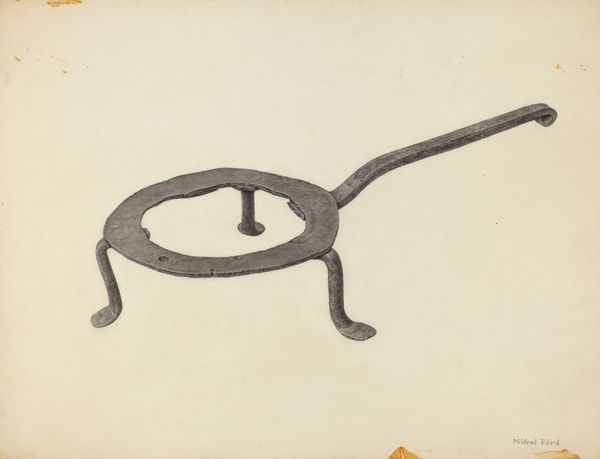
drawing, watercolor
#
drawing
#
watercolor
#
watercolor
#
realism
Dimensions: overall: 27.9 x 35.5 cm (11 x 14 in.) Original IAD Object: 34" long
Copyright: National Gallery of Art: CC0 1.0
Curator: This watercolor and drawing by Elizabeth Johnson, around 1942, presents us with two branding irons. The first one, dominating the composition, is a detailed representation of the actual tool. Next to it, to the right and smaller, is its brand. What strikes you initially about it? Editor: The stark simplicity of the rendering, coupled with the utilitarian subject, gives it an austere feel, doesn't it? It feels very grounded, like an objective record. It’s as if the artist wants to isolate and present the meaning of this specific, material tool within the bigger cultural landscape of, maybe, rural America. Curator: Yes, this emphasis on the objective world can be seen to signify the identity construction and control exerted through this tool. Brands aren't just marks; they represent ownership, legacy, a kind of visual shorthand for identity itself. The detail that the artist brings to rendering that texture transforms what could have been a mundane rendering into a representation invested with deeper cultural weight. Editor: You're right, it makes one consider how brands worked on cattle as part of the open range. I find the way Johnson chooses to center the visual representation of the branding irons compelling. Given its historic place within American industry, did the brands stand for more than simple private ownership? It's a surprisingly powerful symbol. Curator: Absolutely. Branding irons carry all sorts of meaning around the West and what it signified during the historical period. The irons aren't merely tools of ownership. This can become especially clear when one takes into consideration that people would rework existing brand designs through slight manipulations so that families could claim both identity and distinction at the same time. We are witnessing, here, a specific act of encoding history, ancestry, ownership and perhaps something of community cohesion into graphic form. Editor: That makes me think differently about what Johnson's intentions might have been by carefully delineating the different symbolic meanings these irons invoke. Looking at "Branding Iron", I thought the work to be a reflection on function, identity, labor and material reality. I hadn’t even considered all the rich connections you bring to the surface here. Curator: And conversely, viewing these connections might elide the actual socio-economic pressures surrounding these objects during this historical moment, right? All worthwhile starting points.
Comments
No comments
Be the first to comment and join the conversation on the ultimate creative platform.

